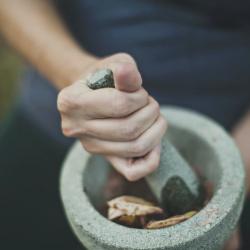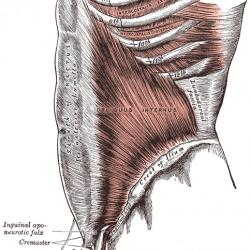How Massage Therapy Can Help Optimise Your Workouts
Whether you're a professional fitness trainer, or just getting started with your fitness journey, massage therapy has a multitude of positive effects on our physical and mental well-being.
Thanks to the applied pressure and the physical touch experienced during sessions, massages reduce overall stress and help us relax. They also promote blood circulation and thus stimulate the exchange of nutrients in the body, and can also relieve adhesions and tension in the muscles and connective tissue.
Moreover, because massages can provide an optimal warm-up for muscles before any intense physical activity, and improve muscle flexibility, massages, and sports activities are inevitably linked.
For this reason, both amateur and competitive athletes integrate pre or post-workout massages to sustain a holistic recovery and help restore mental energy levels. As a result, massages can have a wide variety of indications.
1. Exercise benefits of massage therapy
While the word massage and mood enhancer should basically be synonyms at this point, it goes without saying that one of the most significant advantages of receiving a massage is that it really boosts your serotonin, dopamine, and oxytocin levels.
Apart from this, a crucial benefit of incorporating massage to your fitness routine is restoring the muscles to their natural state by slowing down the production of lactic acid after an intense work-out.
Besides helping prevent or treat an injury, massages can also help you loosen up before your training session or competition. When experienced before workouts, they’ll help you relax and get back in touch with your body.
2. Reduce soreness and muscle stiffness
Whether sore muscles, strains, or tension - massages are scientifically proven to facilitate healing and recovery. A 2015 study revealed the fact that massaged aching muscles have more blood vessels in comparison with muscles that haven’t been massaged. The research also showed that these muscles were up to 50% less scared than the non-massaged ones.
Tip from trainer Liam Coultman of startrowing.com and thespeedproject.com: If you’re looking to increase the current workload or intensity of your workouts, schedule a massage session following your hardest sessions of the week. A good massage session will not only promote tissue regeneration, but will also help reduce fibrosis. This is also very effective for those who have not worked out in a long time or are coming back from an injury.
3. Recovery and avoiding injury
One of the most amazing benefits of massage is its potential to reduce the risk of injuries and help muscles regenerate faster. Massages can also loosen adhesions that have developed during the healing process of older injuries.
In addition to this, massages also stimulate blood circulation and lymphatic drainage in the body, thus helping release the build tension in the muscles. According to this research, inflammation in the body is considerably reduced.
Massage therapy not only helps boost your immune system, but your cells get a fresh supply of oxygen that supports the muscle regeneration, and helps prevent injury. As seen in this 2012 study, muscle tissue can recover more quickly after it has been massaged - and thus prevent muscle soreness.
In other words, massages prevent the cells from releasing excessive amounts of inflammatory messenger substances and thus reduce the risk of inflammation.
According to scientists, this finding could improve the treatment of sports injuries and patients with muscle diseases and, in this context, reduce the excessive use of anti-inflammatory medication.
4. Pain relief
When it comes to pain relief, massage has been known for more than 5 millennia for its incredible ability to restore the body’s natural balance. Apart from reducing a person’s overall stress levels, recent studies have shown that massage can also help reduce symptoms of depression and improve emotional development.
Actually, besides reducing stagnant physical and emotional tension in the body, therapeutic massage can also be a way of dealing with the pain of social isolation. Loneliness is physical, so a massage session performed at least every two weeks can help engage the senses and restore social connectedness.
Among those who do not experience this in their everyday relationships, physical contact improves feelings of anxiety and depression, as shown in this research.
5. Physical improvements
Regular massage mechanically influences the skin, connective tissue, and muscles through stretching, pulling, and pressure stimuli. The effect of the massage extends from the treated area of the body over the entire organism and it also includes the psyche.
Because of this, massage therapy can really bring positive, all-encompassing changes to your physiology.
Furthermore, for people who suffer from limited mobility or experience vascular problems, getting a massage may be key to help them introduce working out to their daily routines and leading a more active lifestyle.
Conclusion
As we noticed, most studies show that massage improves blood circulation, drains stagnant lymph fluid, and brings a lot of physical and mental relief to those who experience it.
Undoubtedly, integrating massage therapy into your exercise routines will come with health benefits for people of all ages, regardless of their past physical activity level.
More to Read:
Previous Posts:







